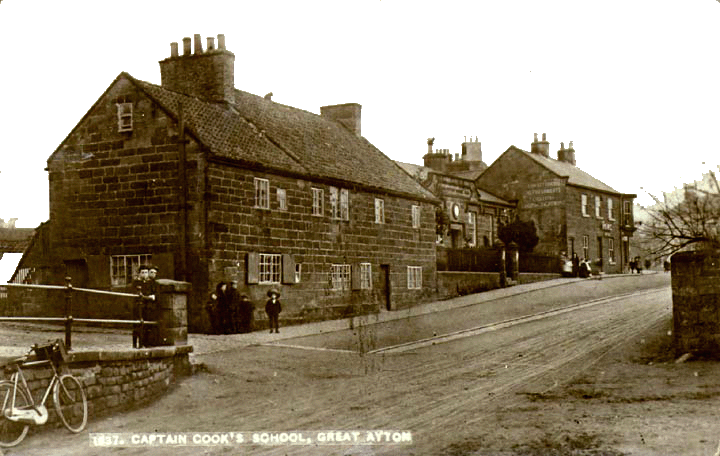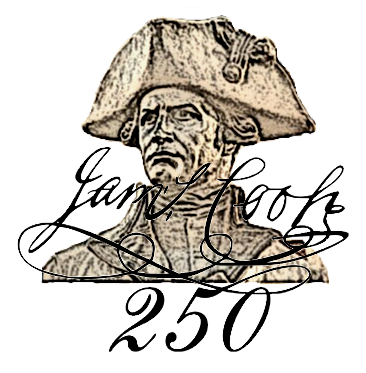
Great Ayton (1738-1745)
The attractive village of Great Ayton (population 5000) is centred on the banks of the River Leven. It is ancient in origin, having several Neolithic sites within the parish boundary, and is mentioned in the Domesday Book. In former times its industries included linen making, tanning and brewing; and the mining industries of whinstone (a hard igneous rock used in roadmaking), ironstone, alum and jet were important locally. Nowadays most of its residents work outside the parish boundary while farming remains an important local industry.
Great Ayton has two village greens. The High Green is the centre of the village while the Low Green, with the river running alongside, is a popular picnic place in the summer months. To the north of the village the view is dominated by the 330 metre high Roseberry Topping. This hill, and the adjacent whinstone outcrop, are of geological importance.
Great Ayton has many connections with Captain Cook. His father worked for Thomas Skottowe, the lord of the manor, and lived at Aireyholme Farm on the side of Roseberry Topping, Thomas Skottowe paid James Cook’s fees at the Postgate School. In All Saints Church (a fine twelfth century building) one can see Thomas Skottowe’s memorial tablet and, in the churchyard, the gravestone of Grace Cook, the explorer’s mother. A cottage, built in the village by Cook’s father, was transferred to Melbourne in Australia in 1933; an obelisk now marks the site. A statue representing Cook as a boy, by the sculptor Nicholas Dimbleby, commissioned by Hambleton District Council and Great Ayton Parish Council, was unveiled on the High Green in 1997.
The Schoolroom Museum in Great Ayton is housed in a building once used as a charity school which was founded in 1704 by Michael Postgate, a local landowner. It was here, between 1736 and 1740, that Captain James Cook received his early education.
With the help of a Lottery Grant in 2012 the museum has been entirely refreshed and modernised. It features a reconstruction of a schoolroom of the early eighteenth century, when teaching methods were very different from today. Interactive displays about James Cook’s early life and education, and his later achievements provide enjoyment for the whole family.
As well as exploring the life of the famous seafarer, a Find Out More touchscreen and a new audio trail allow visitors to dig deeper into Great Ayton’s history and explore the surrounding village. Ask in the Museum for headsets.
The refurbished shop sells a wide range of gifts and books and a new staircase and lift provides easy access to the Museum.
The attractive village of Great Ayton (population 5000) is centred on the banks of the River Leven. It is ancient in origin, having several Neolithic sites within the parish boundary, and is mentioned in the Domesday Book. In former times its industries included linen making, tanning and brewing; and the mining industries of whinstone (a hard igneous rock used in roadmaking), ironstone, alum and jet were important locally. Nowadays most of its residents work outside the parish boundary while farming remains an important local industry.
Great Ayton has two village greens. The High Green is the centre of the village while the Low Green, with the river running alongside, is a popular picnic place in the summer months. To the north of the village the view is dominated by the 330 metre high Roseberry Topping. This hill, and the adjacent whinstone outcrop, are of geological importance.
Captain James Cook
The navigator and explorer, Captain James Cook spent his boyhood in the village. He attended the Postgate School, now converted into the Captain Cook Schoolroom Museum (open April – October). He worshipped in the 12th Century All Saints Church (open afternoons April – October). The cottage formerly occupied and probably built by Captain Cook’s father was dismantled in 1934 and now stands in Fitzroy Park, Melbourne, Australia. In its place is an obelisk built of stone taken from Point Hicks, Australia. A monument to Captain Cook stands in a prominent position on Easby Moor.
